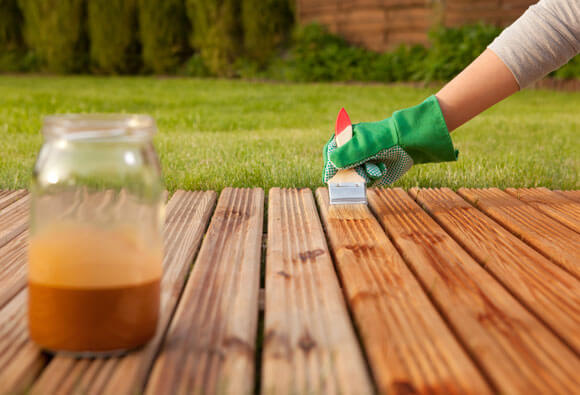Are you considering embarking on a decking project? Perhaps you’ve recently installed a beautiful deck and are wondering how to best protect it from the elements. Choosing the right treatment for your decking boards is crucial in ensuring their longevity, durability, and overall appearance. With an array of options available, it can be overwhelming to determine which treatment is best suited for your specific needs. Fear not! In this comprehensive guide, we will explore various treatments for decking boards, their benefits, and how to make an informed decision that will keep your deck looking stunning for years to come.

Understanding Your Decking Material
Before diving into the world of treatments, it’s essential to understand the type of wood or composite material used in your decking boards. The material plays a significant role in determining the appropriate treatment method. Let’s take a closer look at some common decking materials:
1. Natural Wood
Natural wood such as cedar, redwood, or pressure-treated lumber is a popular choice for decking due to its aesthetic appeal and natural charm. Each type of wood has unique characteristics that affect its durability and susceptibility to weathering.

2. Composite Decking
Composite decking combines wood fibres with recycled plastic and additives to create a durable and low-maintenance alternative to natural wood. It offers excellent resistance against rotting, fading, and warping.
Understanding your specific decking material will help guide you toward the most suitable treatment options.

Oil-Based Treatments: Enhancing Beauty and Protection
Oil-based treatments are popular among homeowners seeking both protection and aesthetic enhancement for their decking boards. These treatments penetrate deep into the wood fibers, nourishing them from within while creating a protective barrier on the surface.
1. Clear Finishes
Clear finishes provide a natural look by preserving the original color of the wood while protecting it from moisture damage caused by rain or snowfall. These finishes are ideal for those who want to showcase the natural beauty of their decking boards.
2. Semi-Transparent Stains
Semi-transparent stains offer a touch of color while allowing the natural grain and texture of the wood to shine through. They provide moderate protection against UV rays, moisture, and mildew growth.
3. Solid Stains
Solid stains are an excellent choice for those looking to completely change the color of their decking boards while providing maximum protection against the elements. These stains create a uniform appearance by hiding the natural grain of the wood.
Water-Based Treatments: Environmentally Friendly Options
For environmentally conscious individuals, water-based treatments offer an excellent alternative to oil-based products. These treatments contain lower levels of volatile organic compounds (VOCs) and emit fewer odors during application.
1. Water-Based Sealers
Water-based sealers provide a clear protective layer on the surface of your decking boards without altering their natural color. They offer good resistance against moisture and UV rays, preventing premature weathering.
2. Colored Water-Based Stains
If you’re looking to add some color to your deck while avoiding harsh chemicals, colored water-based stains are a fantastic option. These stains come in various shades and provide adequate protection against sun damage and moisture.
It’s essential to note that water-based treatments may require more frequent reapplication compared to oil-based alternatives due to their thinner protective layers.
Composite Decking Treatments: Maintenance Made Easy
Composite decking is designed to be low-maintenance, but that doesn’t mean it requires no care at all. While composite materials are resistant to rotting and fading, they can still benefit from occasional cleaning and maintenance.
1. Mild Detergent Wash
To keep your composite decking looking pristine, regular cleaning with a mild detergent solution is usually sufficient. Gently scrubbing away dirt or debris helps maintain its appearance and prevents the growth of mold or mildew.
2. Stain Removers
In case of stubborn stains on your composite decking, specialized stain removers can effectively eliminate them without damaging the surface. These products are designed to target specific types of stains, such as grease or wine.
Conclusion
Choosing the best treatment for your decking boards is crucial in preserving their beauty and extending their lifespan. By understanding your decking material and considering factors like protection, aesthetics, and environmental impact, you can make an informed decision. Whether you opt for an oil-based treatment to enhance the natural beauty of wood or a water-based alternative for eco-friendliness, regular maintenance ensures your deck remains a stunning outdoor oasis for years to come. So go ahead, select the treatment that suits your needs best, and enjoy your beautifully treated decking boards!

